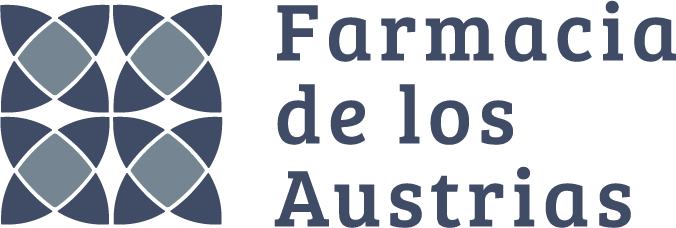Rosacea is a skin disorder that causes redness, pimples, and dilated blood vessels. The most common thing is to identify it by a marked red coloration of the skin. Sometimes it can also be accompanied by lumps with pus and pain, but it varies greatly from person to person.
It has similar symptoms to couperose, and is often confused with it. Couperose is also a skin condition that is characterized by the dilation of blood vessels in the facial area, thus causing the appearance of redness intermittently. These redness are often accompanied by small spider web-shaped veins.
They differ in that couperose is a skin condition that can disappear over time, however, rosacea is a chronic pathology.
Although it is true that, if skin with couperose is not cared for effectively and correctly, it frequently leads to rosacea.
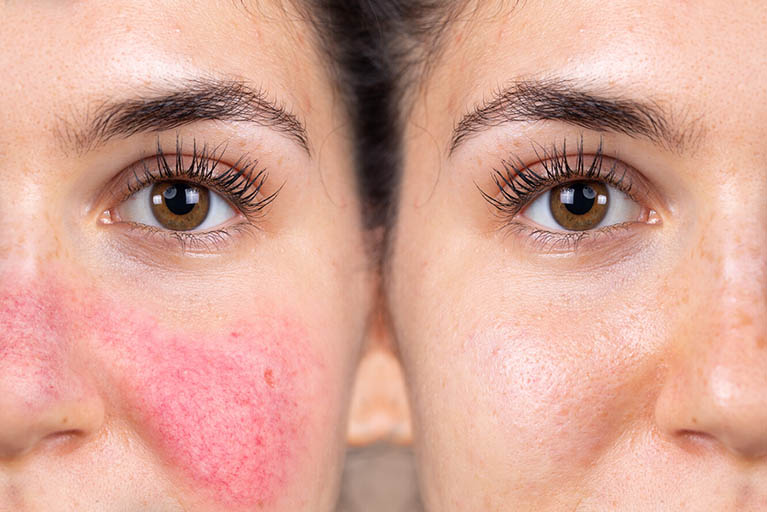
Types of Rosacea
They are classified based on the injuries and symptoms they present.
People who suffer from this type of facial rosacea usually suffer from episodes of redness on the skin that generally last more than 10 minutes. It is usual for this type of rosacea to appear due to consuming certain foods, but emotional and climatic factors (sudden changes in temperature), and even the use of certain cosmetics can also play a role.
Erythematotelangiectatic rosacea usually appears near the nose, cheeks, chin, forehead, and between the eyebrows.
Sometimes itching, burning and/or peeling of the skin may also be experienced.
This type of rosacea is the one that most negatively affects the quality of life of those affected, and the most difficult to control.
This is considered the classic type of rosacea because it is the most common, especially in middle-aged women. It is characterized by the presence of lumps and pimples on the face. It is often confused with hormonal acne. In addition, it can last several days and if not given adequate treatment, it may leave marks.
It occurs mainly in men. Its usual symptoms would be the appearance of papules, nodules and thickening of the skin. Over time, this type of rosacea can thicken the nose very significantly and make it appear bulbous. This is called rhinophyma.
It not only occurs in the nose, it also appears on the chin, forehead and eyelids.
It appears in the eyes and mainly affects the eyelids, conjunctiva and cornea. It generates conjunctivitis, visible redness of the eyes accompanied by irritation and blurred vision. If it worsens it can appear as an eye ulcer.
Symptoms of rosacea in the eyes are especially common in children affected by this disease, and may be the only discomfort.
It is characterized by the presence of yellow, brown or reddish nodules around the mouth, eyes and/or cheeks. As a distinctive feature, these lesions tend to be less inflammatory than in papulopustular rosacea.
Another peculiarity of this type of rosacea is that in up to 15% of cases there are lesions beyond the face, which is not common in this skin disease. For example, on the ears, neckline, neck, back and scalp.
Some dermatologists prefer to consider it a granulomatous dermatitis different from rosacea, precisely because it is not usually associated with erythema and the lesions are not usually found in the central region of the face.
It is called facial pyoderma and is the most extreme variant of the disease.
Although it is rare, it is considered serious because it appears suddenly and with very inflammatory lesions with a very high risk of leaving residual scars.
It usually appears mainly in young women and is manifested by the presence of a large number of papules, pustules and nodules that come together.
It can start as mild rosacea on the chin, cheeks and forehead and quickly progress to affect the entire face.
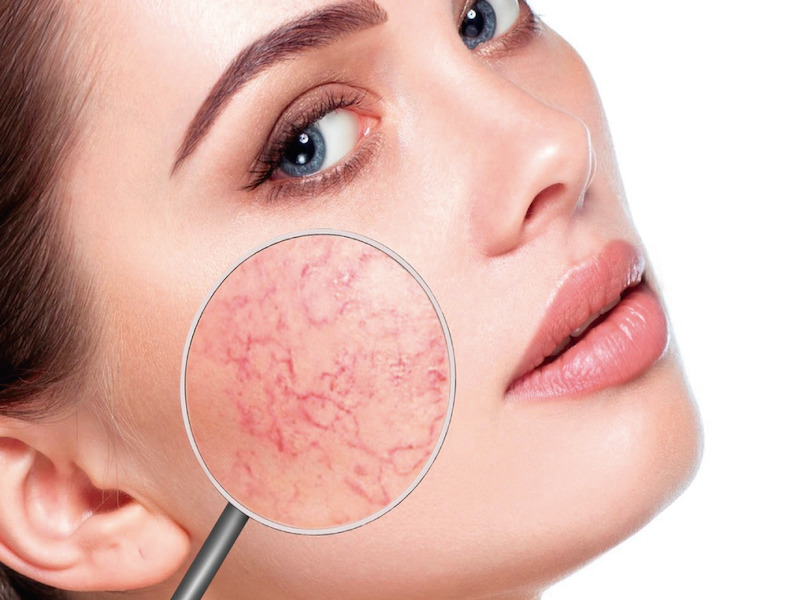
Treatment for Rosacea
In general, the treatment of rosacea is usually based on a combination of cosmetic care, topical drugs and/or oral antibiotics, in addition to trying to avoid triggering factors.
Since each case must be supervised by a doctor to determine if pharmacological treatment is needed, and what type, from here we will focus on treatment at a cosmetic level: what products can be of great help if you suffer from this disease.
The Toleriane Rosaliac line from La Roche Posay offers a fairly complete range to deeply treat this type of skin.
First of all, cleaning in this type of condition is essential. The skin needs to be clean and fresh to breathe properly, thus avoiding the accumulation of oil and clogging of pores. To do this, LRP micellar waters for sensitive skin and reactive skin will be your best ally.
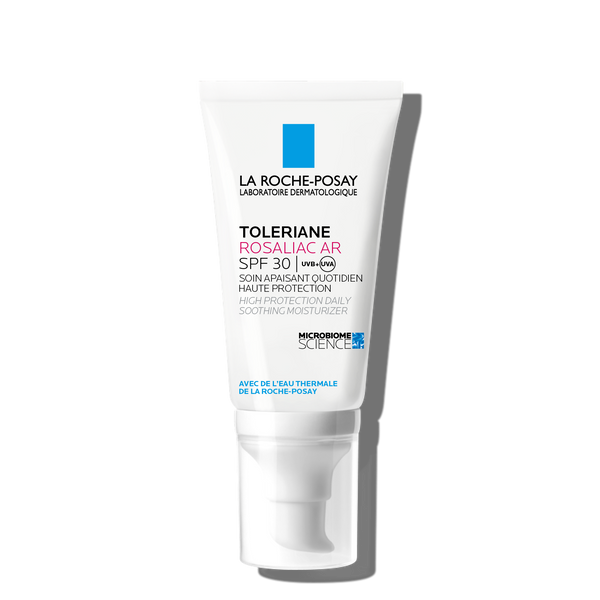
Use specific products for rosacea
If your skin is prone to rosacea, there is nothing like using Toleriane Rosaliac AR from La Roche-Posay. This product has elements that help rebalance the microbiome, hydrate the skin and minimize redness and skin conditions. With use, the skin will be glowing and healthy looking.
It is applied twice a day: in the morning and at night. Plus, you’ll love it because it has a light texture that helps neutralize skin damage. In its formula you will find a bacterial extract from La Roche-Posay thermal spring water, which not only hydrates the skin, but also helps reduce redness and itching. The best? Prevents the reappearance of breakouts!
Additional tips for skin with rosacea.
You can always carry LRP thermal water with you, it will help refresh and calm your skin at specific times, when you feel you need it.
- Try to identify the triggers.
- Use sunscreen daily. It will minimize the appearance of scars as a result of injuries.
- Treat your skin delicately. Do not rub aggressively when cleaning it, do not scratch or apply products that may be irritating to the dermis.
- Use products that do not inflame your skin. Don’t choose your beauty products based on price, but on quality. Read the labels and check the ingredients to check that you are tolerant of all of them. Consult your pharmacist whenever you need it, it will be of great help to you.
- Apply cold, but without burning yourself. You can give yourself a few small massages with ice to reduce inflammation of the skin and pores.
- Follow a balanced diet. What comes is reflected in your skin, so avoid processed foods and high fats. Remember that if you have rosacea or are prone to it, you should choose appropriate products so that your skin looks healthy and beautiful.
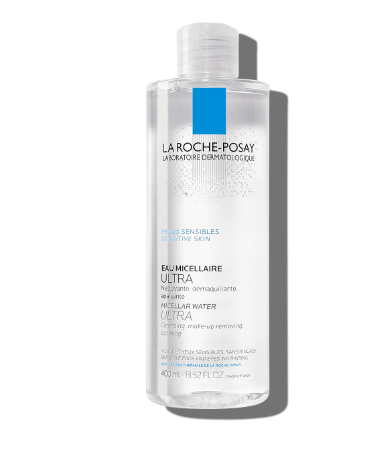
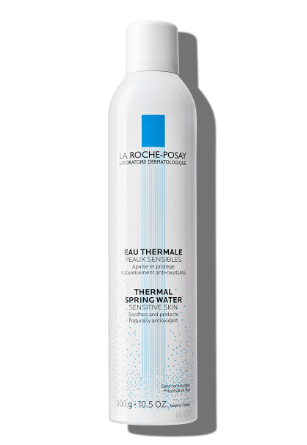
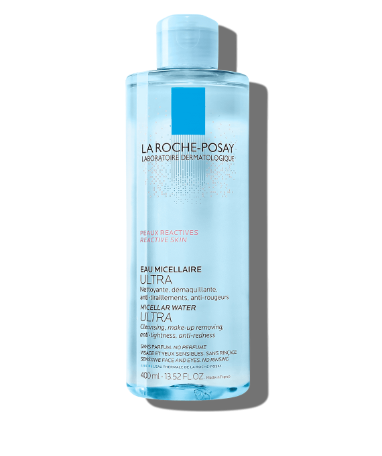
Information
- LA ROCHE POSAY – ROSACEA: WHAT IT IS AND HOW TO TREAT IT: https://www.laroche-posay.es/article/rosacea
- VIÑAS LABORATORIES – THE DIFFERENT TYPES OF ROSACEA: https://www.vinas.es/blog/noticia/cuidado-de-la-piel/332-los-diferentes-tipos-de-rosacea

